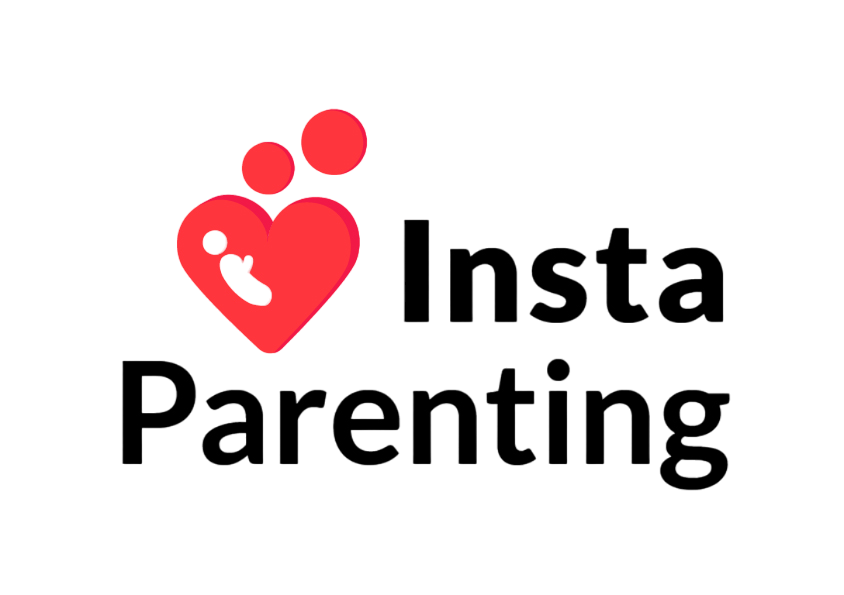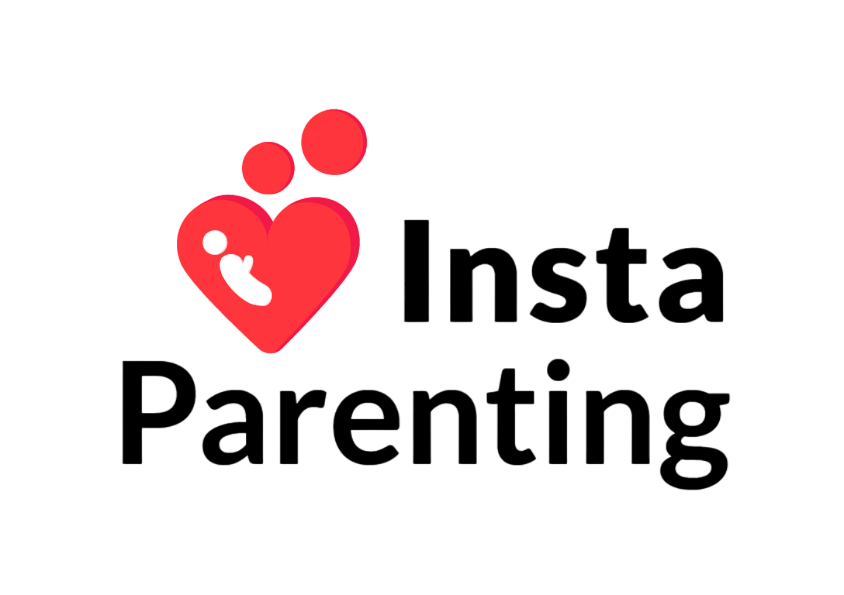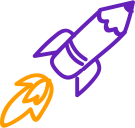Baby develops the fastest from birth to 1 year old. These changes take place across various domains of development i.e.
- Cognitive
- Physical (Fine and Gross Motor)
- Socio-emotional and
- Language.
Most children follow a certain pattern of growth and development or achieve certain skills/abilities at a particular stage in development. These are called developmental milestones. However, it is important to note that every child grows and develops at their own pace, and might achieve a few milestones faster or slower than usual. If you feel concerned about your child not achieving a milestone, contact your pediatrician or speak to our expert.
Did you know?
90% of a child’s brain development happens by the age of 6?
Cognitive Development:
- Is highly curious and explores objects in different ways (e.g. touching, shaking, banging, pushing, throwing, dropping, etc.)
- Imitates gestures/actions.
- Begins to use objects correctly (e.g. drinking from a glass, brushing teeth, using a phone).
- Observes the path of an object as it falls.
- Plays peek-a-boo.
- Recognizes familiar people, objects or pictures in books (e.g. may point to a cat when asked “Where is the cat?”).
- Becomes more aware of themself as a separate being.
- Might point to a few body parts, when asked.
- Starts developing problem-solving abilities (e.g. uses a stick to drag a toy).
- Experiments with action and reaction eg- opens and closes the door, window.
- Shows signs of better memory (e.g. remembering details of something done a few minutes before).
Physical Development:
- Gets into a sitting position without help.
- Crawls or bum shuffles easily.
- Uses support (e.g. furniture) to pull themself up to stand.
- Might begin to stand on their own without support (by 12 months).
- Begins to cruise – walking while holding onto furniture or an adult’s hands.
- Might take two or three steps without support.
- Might begin to climb stairs or furniture.
- Can sit back down from standing position.
- Puts in and takes out objects from a container.
- Uses pincer grip (using tips of the thumb and first finger) to picks up small items (e.g. cereal, beads, etc.).
- Moves things smoothly from one hand to the other.
- Uses both hands separately (e.g. picks up a block with one and a toy with the other).
- Voluntary release is more refined (e.g. can put objects into a box). Might still find it difficult to put things into small containers).
- Turns pages in a book (many at a time).
- New teeth keep emerging; they may have 4-6 teeth by the time they turn 1.
Socio-emotional Development:
- Shows preference for things or people (e.g. May have a favourite toy).
- Might still show signs of stranger- or separation- anxiety (e.g. might cry when a parent leaves).
- Engages in imitation/copy play (imitates people).
- Continues to prefer mother and/or regular caregiver over others.
- Displays more emotions like affection, anger, frustration, joy or fear (e.g. might give hugs/kisses/cuddles to show affection).
- Becomes a little cooperative while changing/dressing (e.g. holds out arms to help when being dressed).
- Observes parents’ responses to their behaviour during feeding and/or play.
- Enjoys playing games with and showing toys to familiar adults.
- Begins to show guilt if they do something wrong.
- Tries to do things that will please people especially parents; tries to avoid disapproval.
Language Development:
- Pays more attention to speech.
- Looks at a person who calls their name.
- Begins to understand simple questions or instructions
- (e.g., “Where is the ball?” “Put the ball down”).
- Communicates using simple gestures (e.g. shaking head for “no”; waving “bye-bye”).
- Tries to talk/communicate by combining sounds together (e.g. dada abee dama).
- Engages in conversation-like communication with parents/adults (e.g. takes turns making sounds with an adult).
- Uses exclamations such as “uh-oh!”
- Shows an interest in simple picture books.
- Might begin to says “da-da” and “ma-ma” (knowing who they are).
Feeding and Sleeping Information:
- Shows interest/disinterest in foods (e.g. keeping the mouth open/closed or turning away).
- Swallows semi-solid foods.
- Feeds themself finger-foods e.g. carrot sticks or banana slices.
- Drinks from a cup with a handle on their own.
- Sleeps for up to 12 hours at night without feeding (takes about two naps during the day).
Did you know?
Research reveals that – every $1 invested in an early childhood program can yield $4-$16 in returns.
Helps your child achieve the above milestones through simple at home activities for 9 to 12 months old. Subscribe to Jyppzer Kids Plan Today!
Baby develops the fastest from birth to 1 year old. These changes take place across various domains of development i.e.
- Cognitive
- Physical (Fine and Gross Motor)
- Socio-emotional and
- Language.
Most children follow a certain pattern of growth and development or achieve certain skills/abilities at a particular stage in development. These are called developmental milestones. However, it is important to note that every child grows and develops at their own pace, and might achieve a few milestones faster or slower than usual. If you feel concerned about your child not achieving a milestone, contact your pediatrician or speak to our expert.
Did you know?
90% of a child’s brain development happens by the age of 6?
Cognitive Development:
- Is highly curious and explores objects in different ways (e.g. touching, shaking, banging, pushing, throwing, dropping, etc.)
- Imitates gestures/actions.
- Begins to use objects correctly (e.g. drinking from a glass, brushing teeth, using a phone).
- Observes the path of an object as it falls.
- Plays peek-a-boo.
- Recognizes familiar people, objects or pictures in books (e.g. may point to a cat when asked “Where is the cat?”).
- Becomes more aware of themself as a separate being.
- Might point to a few body parts, when asked.
- Starts developing problem-solving abilities (e.g. uses a stick to drag a toy).
- Experiments with action and reaction eg- opens and closes the door, window.
- Shows signs of better memory (e.g. remembering details of something done a few minutes before).
Physical Development:
- Gets into a sitting position without help.
- Crawls or bum shuffles easily.
- Uses support (e.g. furniture) to pull themself up to stand.
- Might begin to stand on their own without support (by 12 months).
- Begins to cruise – walking while holding onto furniture or an adult’s hands.
- Might take two or three steps without support.
- Might begin to climb stairs or furniture.
- Can sit back down from standing position.
- Puts in and takes out objects from a container.
- Uses pincer grip (using tips of the thumb and first finger) to picks up small items (e.g. cereal, beads, etc.).
- Moves things smoothly from one hand to the other.
- Uses both hands separately (e.g. picks up a block with one and a toy with the other).
- Voluntary release is more refined (e.g. can put objects into a box). Might still find it difficult to put things into small containers).
- Turns pages in a book (many at a time).
- New teeth keep emerging; they may have 4-6 teeth by the time they turn 1.
Socio-emotional Development:
- Shows preference for things or people (e.g. May have a favourite toy).
- Might still show signs of stranger- or separation- anxiety (e.g. might cry when a parent leaves).
- Engages in imitation/copy play (imitates people).
- Continues to prefer mother and/or regular caregiver over others.
- Displays more emotions like affection, anger, frustration, joy or fear (e.g. might give hugs/kisses/cuddles to show affection).
- Becomes a little cooperative while changing/dressing (e.g. holds out arms to help when being dressed).
- Observes parents’ responses to their behaviour during feeding and/or play.
- Enjoys playing games with and showing toys to familiar adults.
- Begins to show guilt if they do something wrong.
- Tries to do things that will please people especially parents; tries to avoid disapproval.
Language Development:
- Pays more attention to speech.
- Looks at a person who calls their name.
- Begins to understand simple questions or instructions
- (e.g., “Where is the ball?” “Put the ball down”).
- Communicates using simple gestures (e.g. shaking head for “no”; waving “bye-bye”).
- Tries to talk/communicate by combining sounds together (e.g. dada abee dama).
- Engages in conversation-like communication with parents/adults (e.g. takes turns making sounds with an adult).
- Uses exclamations such as “uh-oh!”
- Shows an interest in simple picture books.
- Might begin to says “da-da” and “ma-ma” (knowing who they are).
Feeding and Sleeping Information:
- Shows interest/disinterest in foods (e.g. keeping the mouth open/closed or turning away).
- Swallows semi-solid foods.
- Feeds themself finger-foods e.g. carrot sticks or banana slices.
- Drinks from a cup with a handle on their own.
- Sleeps for up to 12 hours at night without feeding (takes about two naps during the day).
Did you know?
Research reveals that – every $1 invested in an early childhood program can yield $4-$16 in returns.
Helps your child achieve the above milestones through simple at home activities for 9 to 12 months old. Subscribe to Jyppzer Kids Plan Today!





